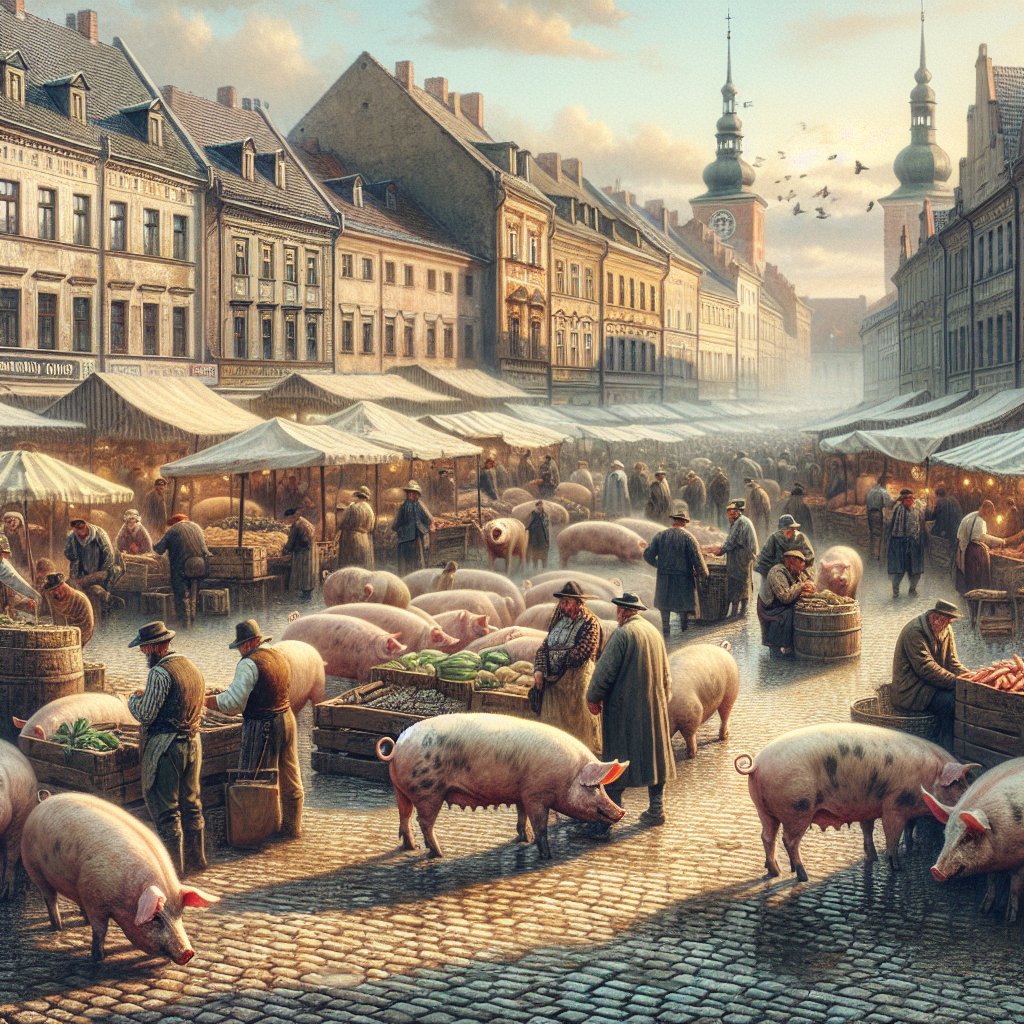The pig market plays a crucial role in the agricultural economy, particularly in Poland and Europe. Understanding the dynamics of pig prices is essential for farmers, investors, and policymakers alike. This article delves into the analysis of live pig prices in Poland and Europe, exploring the factors that influence these prices, market trends, and the implications for the agricultural sector.
Factors Influencing Pig Prices
Several factors contribute to the fluctuations in pig prices, both in Poland and across Europe. These factors can be broadly categorized into supply and demand dynamics, production costs, and external influences such as trade policies and disease outbreaks.
Supply and Demand Dynamics
The basic economic principle of supply and demand significantly impacts pig prices. When the supply of pigs exceeds demand, prices tend to fall. Conversely, when demand outstrips supply, prices rise. In recent years, the demand for pork has been influenced by changing consumer preferences, health trends, and the popularity of alternative protein sources.
- Consumer Preferences: The growing trend towards organic and sustainably sourced meat has led to increased demand for high-quality pork products. Consumers are willing to pay a premium for pork that meets these criteria, which can drive up prices.
- Global Demand: The international market also plays a significant role in determining pig prices. Countries such as China, which has a high demand for pork, can influence prices in Europe and Poland. Any changes in trade agreements or tariffs can have immediate effects on the market.
Production Costs
The cost of production is another critical factor affecting pig prices. Farmers face various expenses, including feed, veterinary care, labor, and housing. Fluctuations in the prices of feed ingredients, such as corn and soybeans, can significantly impact overall production costs.
- Feed Prices: Feed typically accounts for a large portion of the total cost of pig production. When feed prices rise due to poor harvests or increased global demand, farmers may be forced to raise their prices to maintain profitability.
- Labor Costs: The availability and cost of labor can also affect production costs. In regions where labor shortages are prevalent, wages may increase, further driving up the cost of pig production.
External Influences
External factors such as disease outbreaks and government policies can also have a significant impact on pig prices. For instance, outbreaks of diseases like African swine fever (ASF) can lead to a drastic reduction in pig populations, causing prices to spike due to reduced supply.
- Trade Policies: Changes in trade policies, such as tariffs or import/export restrictions, can affect the flow of pigs and pork products across borders, influencing local prices.
- Regulatory Changes: New regulations regarding animal welfare, environmental standards, and food safety can also impact production costs and, consequently, pig prices.
Market Trends in Poland and Europe
Analyzing the current market trends in Poland and Europe provides valuable insights into the future of the pig industry. Recent years have seen various shifts in production practices, consumer behavior, and market dynamics.
Current Price Trends
In Poland, live pig prices have experienced fluctuations due to various factors, including seasonal demand and changes in production levels. As of the latest reports, prices have shown a tendency to stabilize after a period of volatility, reflecting a balance between supply and demand.
- Seasonal Variations: Prices often rise during festive seasons when demand for pork increases. This seasonal demand can lead to higher prices, benefiting farmers who are prepared to meet this demand.
- Market Stabilization: After experiencing significant price drops in previous years, the market has begun to stabilize, with prices reflecting a more sustainable level of production and consumption.
Comparative Analysis with European Markets
When comparing Poland’s pig market to other European countries, several trends emerge. Countries like Germany and Spain have established themselves as major players in the European pig market, often influencing prices across the continent.
- Price Disparities: There are notable price disparities between Poland and Western European countries. Factors such as production efficiency, market access, and consumer preferences contribute to these differences.
- Export Opportunities: Poland has been increasing its pork exports, particularly to countries with high demand. This trend is expected to continue, providing opportunities for Polish farmers to benefit from higher prices in international markets.
Future Outlook
The future of the pig market in Poland and Europe will likely be shaped by several ongoing trends. Sustainability, technological advancements, and changing consumer preferences will play pivotal roles in determining the direction of the industry.
- Sustainability Initiatives: As consumers become more environmentally conscious, the demand for sustainably produced pork is expected to rise. Farmers who adopt sustainable practices may find themselves better positioned in the market.
- Technological Advancements: Innovations in breeding, feeding, and health management can lead to increased efficiency and productivity, potentially lowering production costs and stabilizing prices.
Conclusion
The pig market in Poland and Europe is influenced by a complex interplay of factors, including supply and demand dynamics, production costs, and external influences. Understanding these factors is essential for stakeholders in the agricultural sector. As the market continues to evolve, staying informed about trends and changes will be crucial for farmers, investors, and policymakers alike. The future of the pig industry will depend on the ability to adapt to changing consumer preferences, embrace sustainability, and leverage technological advancements to ensure a profitable and resilient market.




